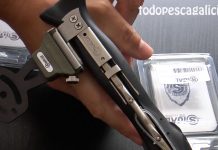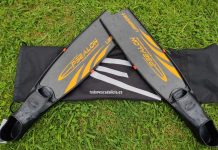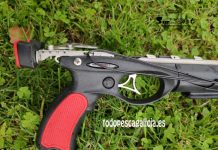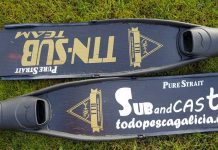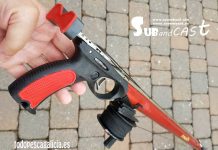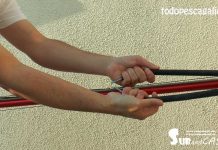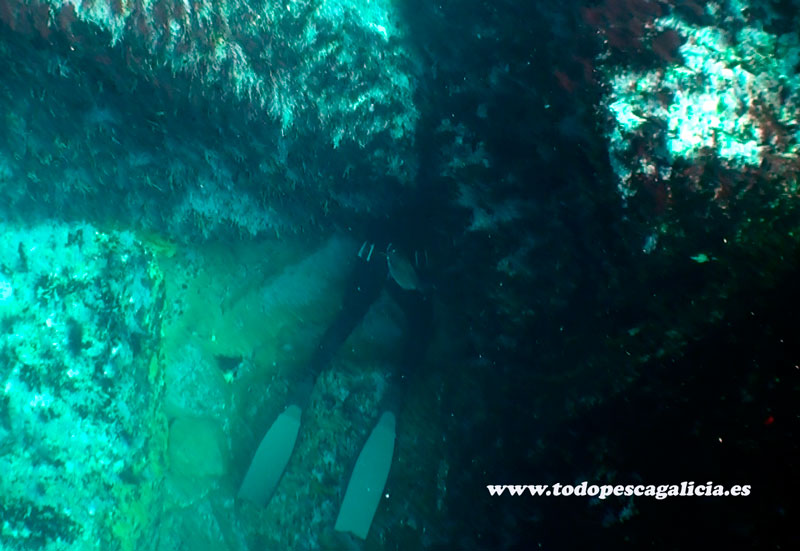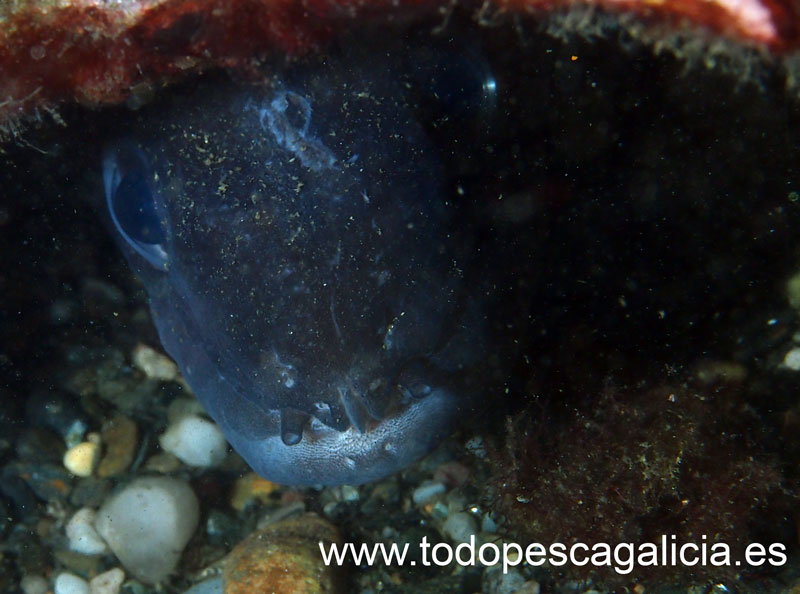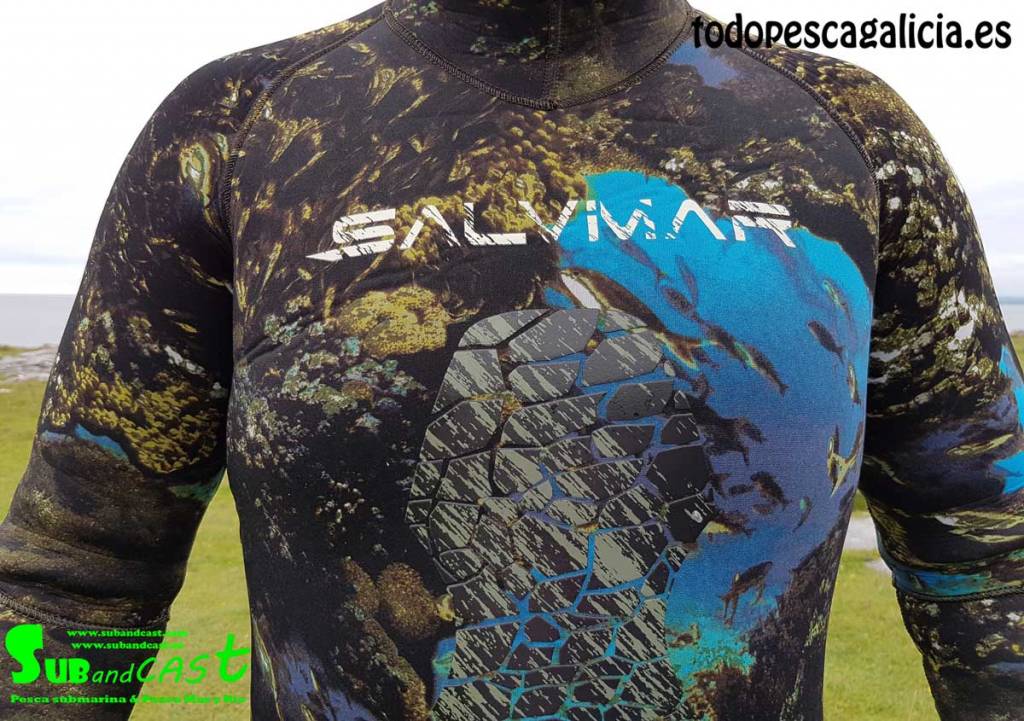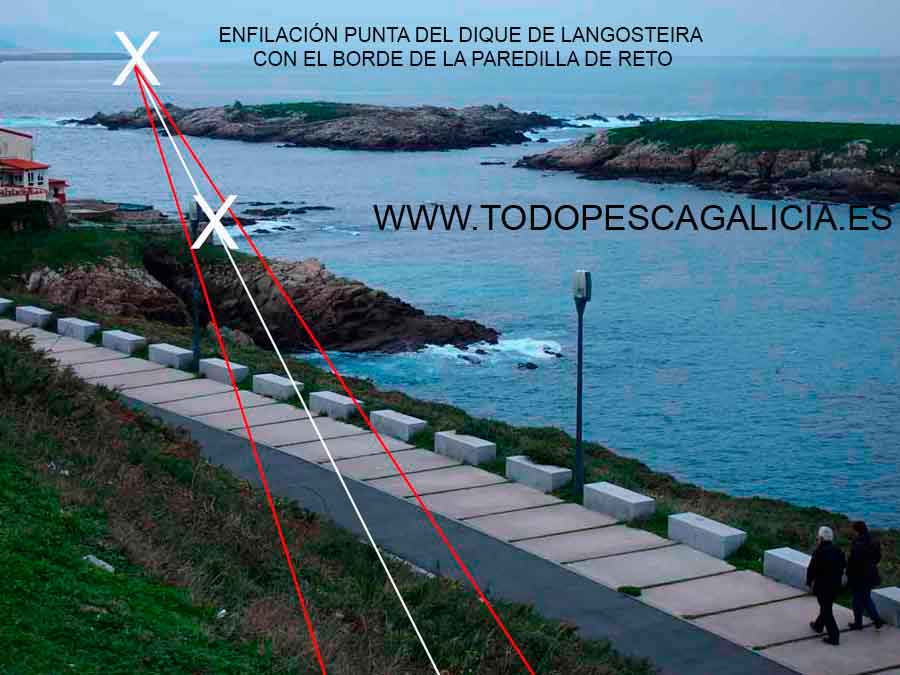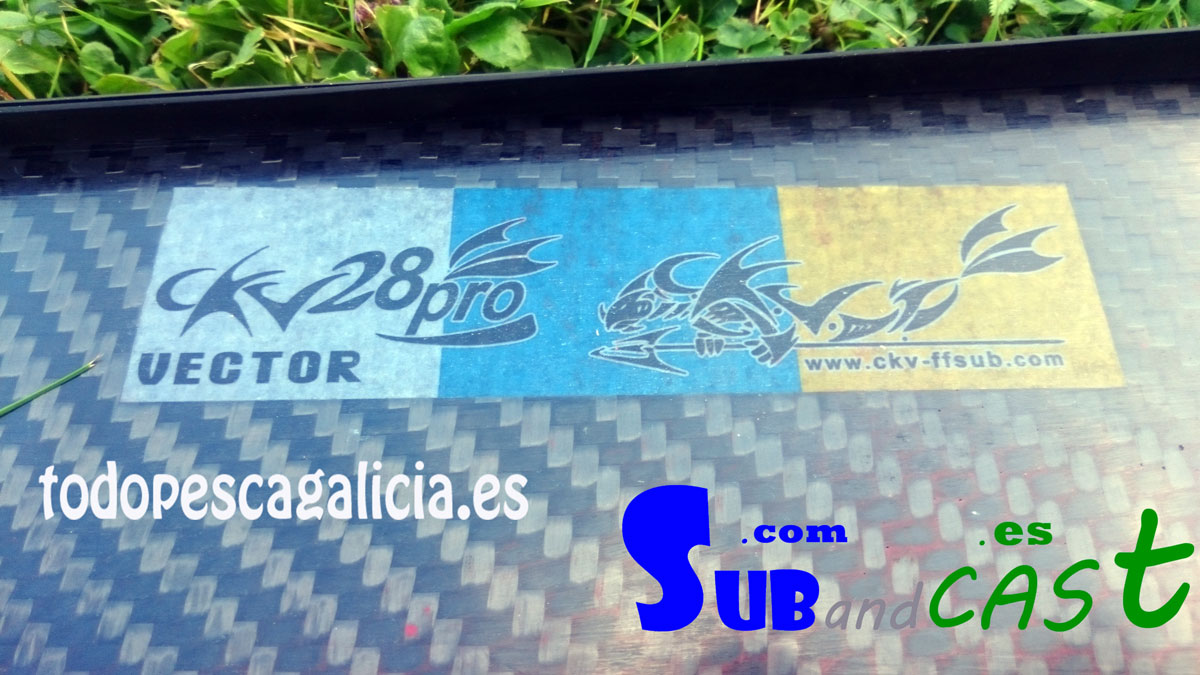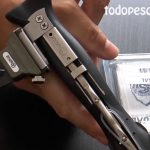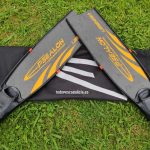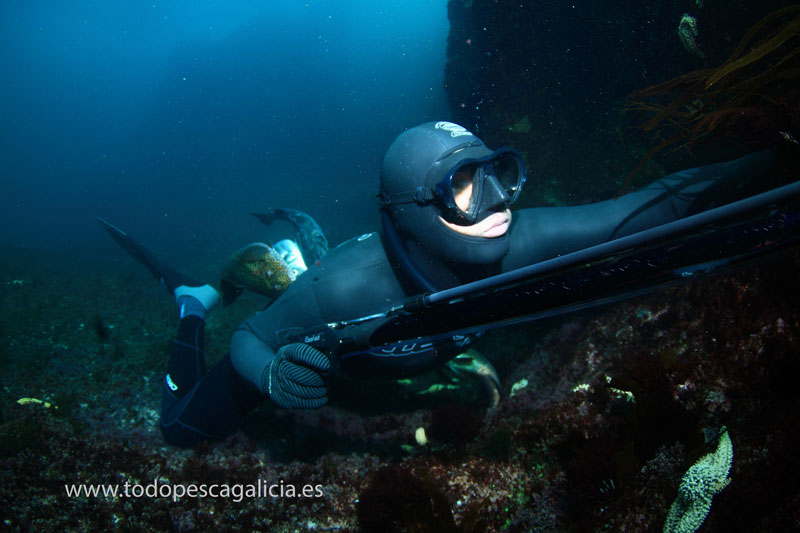THE BUOY IN SPEARFISHING. HOW TO USE IT
This is another essential element (mandatory by the law) in spearfishing. It must be red or orange, or another visible one (yellow), although the most common are the red ones. Always with the alpha flag (white and blue). Otherwise, the red and white can be used, but the law talks specifically about the alpha flag. This flag means “diver in the water”. It will be useful for indicating our position and any watercraft around will have to keep a minimum distance of 25m.
We will use it with a floating rope, and a line holder which will be useful to roll up that rope, and release what we need in each moment. A bungee can be used to avoid sudden pulls due to rough seas.
It must have a weight on the end of the rope, allowing us to leave it anchored. And the buoy will be NEVER tied to the body. One of the best ways is with the ‘anchor weight’ between the belt and the body. Although there are weights with a little flap to put them on the belt already and which can be released quickly in the case of a difficult situation.

LINE HOLDER TO ROLL UP THE BUOY’S ROPE
Carry a buoy tied to our bodies can be very dangerous, for example if it gets tangled in a rock when we are ascending to the surface short of air. Or if a boat gets tangled with it (something that shouldn’t happen, but that it’s possible). The buoy must be able to be released without effort and without any chance of getting tangled.
SAFETY FIRST
Besides the buoy, there are boards that allows us to swim on them, or to carry a lot of gear, drinks, documentation… They will be more comfortable in a lot of occasions, specially going from the shore. They have the disadvantage of being uncomfortable to drag when the sea is rough. The wind hits them strongly and they pull on the rope, making us slower.
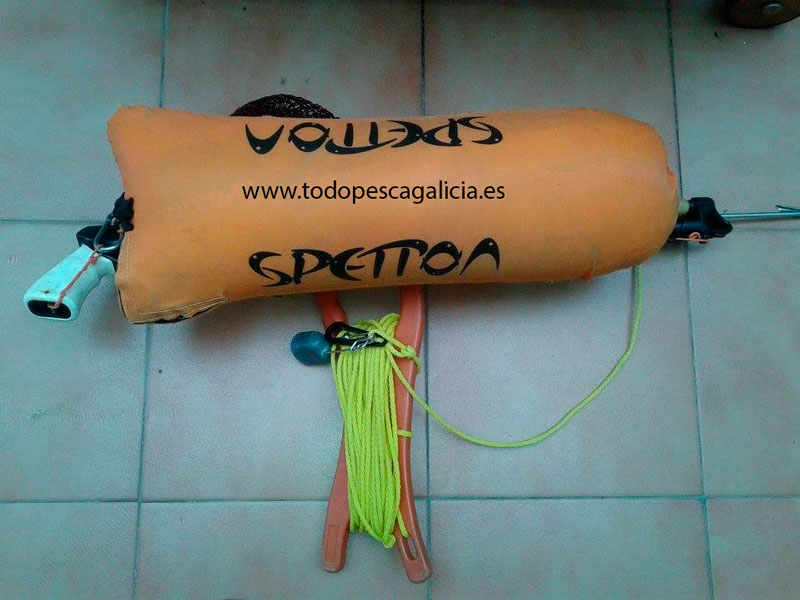
Once we saw what is the buoy, we are going to focus more specifically in its use. How we can get the best of it, be more comfortable and safer.
ITEMS THAT MAKE UP THE BUOY ENSEMBLE
The buoy is not only the red part that has to be inflated and floats. It also has the rope with which it gets connected to us, a line holder, carabiners, a weight to be anchored… We are going to see them one by one:
Floating rope: is the line with which we connect the buoy to us. It always has to be floating rope, otherwise it could get easily tangled on the bottom, rocks… The one that comes with the buoy when we buy it is useless. It’s better a thicker line, that would avoid messes and knots, and if they happen, they will be easier to undo. We can put a bit of bungee rope in the join with the buoy, this will be good to minimize the pulls caused by the waves.
Line holder: it’s a piece in which we will roll up the line, being able to release more or roll up as we need. This way we will not need to leave it all floating on the water. When we go deep we need more, and when we stay in shallow waters we need a lot less, this way we carry it in a tidy way.
Anchor weight: there are several different types. There are some flat ones, cylindrical, heavier or lighter… This is a matter of personal taste.
Carabiners: we can carry some carabiners in the buoy to hang stuff. Water, a net, the fish stinger, spare spearguns… My advice is to go for the plastic ones. They don’t snap often. The metallic ones can get stiffened with the pass of the time and they are more expensive. It wouldn’t be the first time that a speargun is lost due to a carabiner.
Bungee lines: besides the use as a shock absorber, they are very useful around the buoy. If we put two bungee lines, one in the front side and another in the back part, we will be able to carry our stuff more safely and more organized. For example, besides carrying a gun with a carabiner, if we put it between this two lines, it will go closer to the buoy, it will create less drag and it will be much more safe.
HOW TO USE THE BUOY
Although it can seem very easy, it’s a must to know how to use the buoy, at least in a basic way. We are going to talk about it and see some tricks to avoid messes, specially when we are starting.
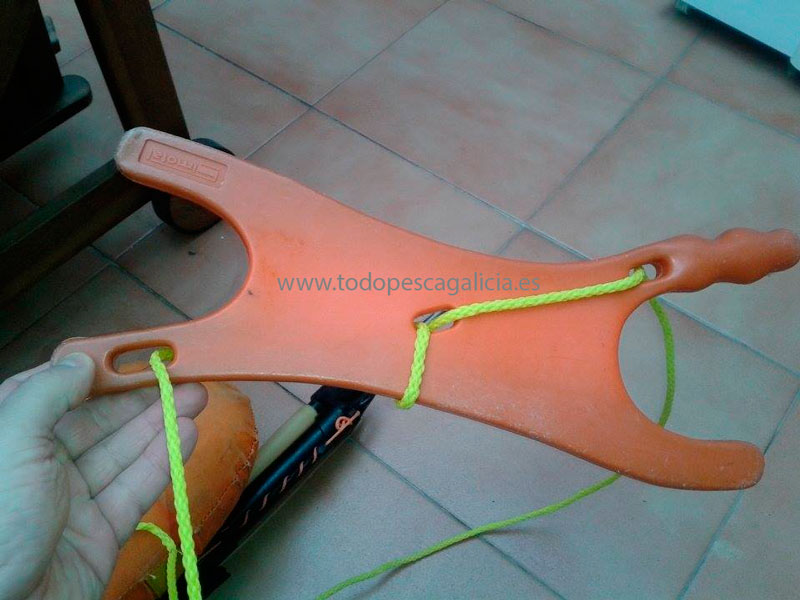
Entering into the water: For some people is one of the key moments in which they end tangled with the line. There are two main ways to do it.
One, releasing the line on dry land and throwing the anchor weight far away. This will stretch the line in the water. We will enter into the wáter without any problem and, once we are in it, comfortable and wearing all the gear, we just have to go to where the anchor weight is, pick it up and start fishing. With the line totally stretched.
The second way is enter with the line rolled up in the line holder and the buoy almost in our hand. We enter into the water and when we are in it, wearing all the gear (mask, fins…) we start releasing the rope we need from the line holder. It’s better to do it swimming, slowly, this way the line will stretch itself slowly.
While fishing: When we are fishing, the line can get tangled in our legs, in the knife… To avoid it, the best we can do is to carry the buoy between the belt and the body, in one side, over the hip. This way it will go out from one side, not by the middle. If we carry it in the middle (belly), the rope is prone to go always between the legs. And also it’s easier for the weight to slip, while descending or breathing, due to being left a little bit loose.
THIS IS THE FAST WAY TO ATTACH THE ROPE IN THE LINE HOLDER. WE DO A TURN, WE PASS IT THROUGH THE HOLE AND TO ONE OF THE HORNS IN THE OTHER SIDE. TO RELEASE IT JUST LOOSEN IT AND PULL. THIS WAY WE CAN ADJUST QUICKLY THE AMOUNT OF ROPE WE WANT TO HAVE UNLEASHED, ROLLING UP THE REMAINING IN THE LINE HOLDER.
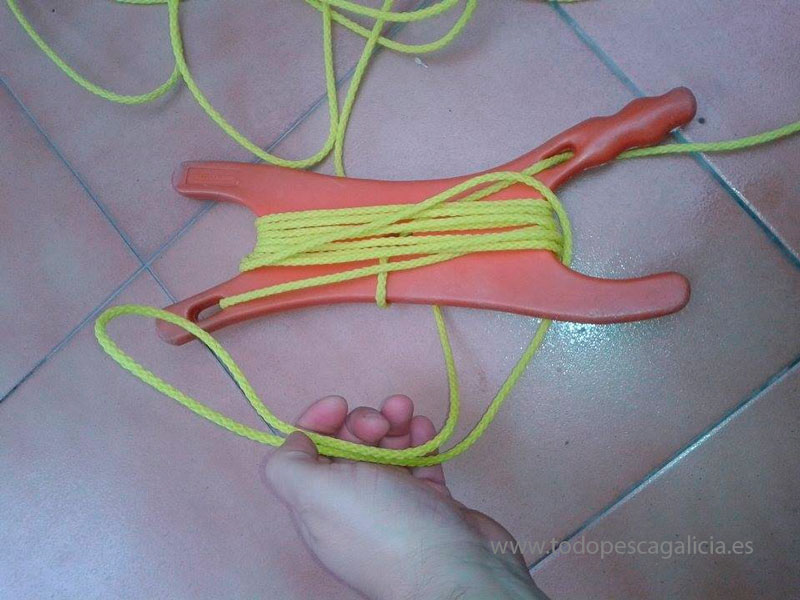
Using the buoy to mark: When we find a good cave or a fishing spot we like, we can use the buoy as a sign to avoid losing it. On dirty and choppy waters, like Galician, Atlantic, Cantabric, Gibraltar Strait… is basic. Because we don’t see the bottom from the surface, and with the drift created by the current, wind, swell… we will lose the situation and it will be difficult to find it again (or even impossible some times). The same happens when there is a lot of sea weed.
It’s very useful to put a little carabiner on the speargun’s handle or on the anchor weight. This way, if a shaft gets blocked in the bottom, we can attach it to the buoy as shown in the picture.
COMMON MISTAKES WHEN CARRING THE BUOY
Many people carry the buoy attached to the body. This is a mistake and a big danger. Although we can think that a carabiner can be released easily, under a difficult situation is not going to be that easy. We can always think that we release the belt and that’s it, but is not the best thing we can do. For example if the mess is with a net, and we release the belt, we will ascend like a cork, out of control in shallow water. This is a risk and there is the possibility of getting even more tangled. And not talking about that if the buoy is very tangled in the bottom and we release the belt, we can lose it (and the weights are not cheap nowadays).
Another risk is with the watercrafts, if we have the bad luck of one passing over the rope and getting tangled with it, it will make a strong pull that can hurt us or even worse. In this situation if we carry it with a weight between the belt and the body we would just feel a pull and it would be released.
All these risks would be avoided carrying the buoy with an anchor weight between the body and the belt. There are some with a little flap, which achieve the same purpose and they are very comfortable.
Another common mistake is to carry the buoy connected to the speargun. In very calmed waters can seem a good idea, but in places like the north, days with wind or current, which can pull the buoy, will hinder a smooth gun movement. Even eventual pulls when trying to aim. This on the side of efficiency and comfort. Regarding to the safety, if for any reason the rope gets tangled in the bottom or we have to leave it, we will have a loaded gun rolling under water out of control. With the risk that it means. For example, fishing on the break, if the waves throw the buoy on the rocks and it doesn’t allow us to go out of the break, we will have to leave a gun, which will be left rolling loaded in the bottom. As we can see, these are uncommon situations, but we have to think about them.
Above all, we have to take in mind how easy is to be able to anchor quickly, to mark a spot, to fish comfortable on a reef…
CARRYING STUFF ON THE BUOY
It’s recommendable to take something to drink in long sessions. Also, a spare speargun or a different one. Some spare parts… The buoy is very convenient for this purpose. We will be able to customize it, with the carabiners we need and the bungee lines that helps to organize the gear. This is a matter of personal taste. For example, a lot of spearos prefer pieces of car tires instead of the bungee line. I prefer the bungee line, because I can customize it more according to the tensión.
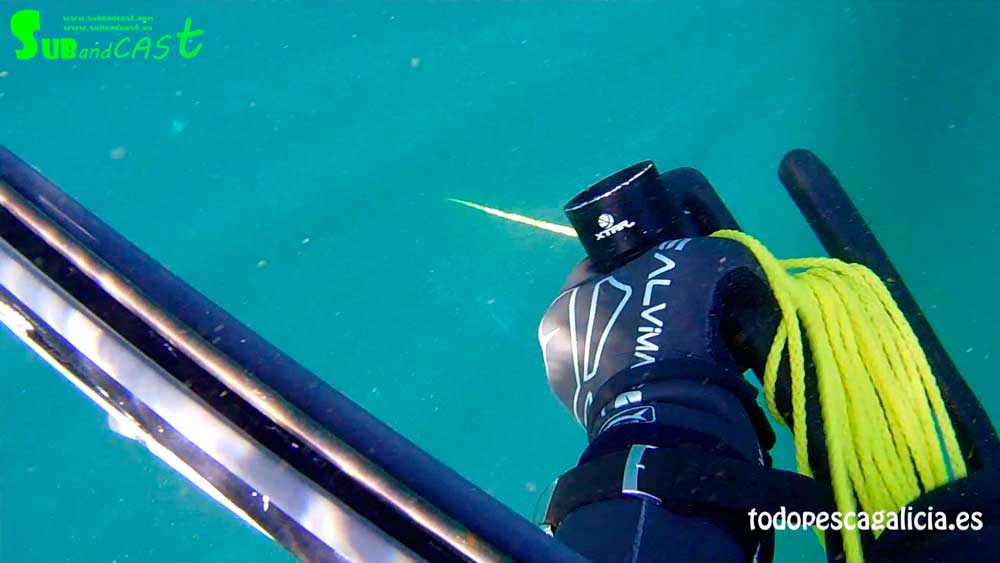
HOW MUCH ROPE SHOULD WE RELEASE
The amount of rope depends on the depth where we are going to dive. We always have to release a few more meters than the depth where we are fishing, because it never goes vertical. For example, to spearfish at 10m depth, we will release about 15m. The stronger the current or the wind, the more we will reléase.
VARIATIONS
It’s also possible to put a piece of colorless nylon in the end, in the section where it joins with the anchor weight, to prevent it from being too loud. It can be advisable.
Many people use sheath (colorless tube, a bit thick) or bungee line. We will talk about this in depth in future articles.



